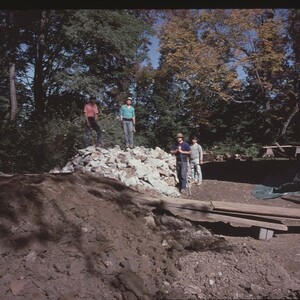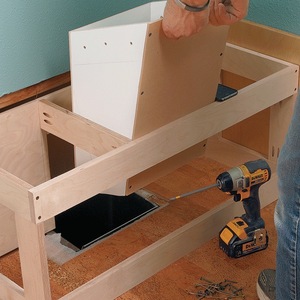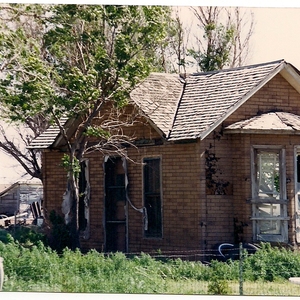I live in a 1928 farm house, with hot water heating (stading radiators in all the rooms). Boiler heats water up to 180° F, but the boiler water temp drops when circulating, obvoiusly.
I want to remodel the 2nd floor bath, and in the process remove the radiator (to give us more usable space, and maybe accomodate a longer tub) and convert that room to in-floor radiant (I do NOT want electric in-floor radiant, though).
I have seen ads for subfloor with the grooves cut in to accomodate the PEX tubing, and I think this should work (I’ll probably tear out existing subfloor).
My main questions are:
1) Can I connect the in-floor radiant heat PEX to the existing hydronic system (are there common fittings for this? Current system is steel pipe)
2) Will the boiler temp be an issue with the new system?
3) Any other advice and info would be appreciated. Thanks in advance.
Pete Duffy, Handyman


















Replies
pete, you might want to take a look at the current issue of FHB #168-Dec/Jan. Pg 52, radiant grooved panel install.
You might have to go back to the boiler and run another loop that would temper your high temp boiler water (with return water from the system) to about 110-130 F. Separate thermostat while you're at it.
Remodeling Contractor just outside the Glass City.
Quittin' Time
Pete: biggest question is: do you have a circulator pump in your existing system or not? My old house is from that era and does not have a circulator- it's thermosiphon driven only. Thermosiphon won't drive enough flow through a PEX loop to do any significant amount of heating- the pressure drop of a long run of tubing is far too great to run on density difference alone.
If you have a circulator pump, you probably don't have large temperature differences between inlet and outlet water in your rads. As to whether or not the existing 180 F water can be safely fed to PEX tubing, I think it's a little hotter than recommended and I think you might have to put a separate circulator and tempering loop on your existing system to make the PEX happy. If you don't have a main circulator feeding the rads, you may be able to merely recirculate some of the rad return water through your new PEX loop with a new circulator pump.
But don't take it from me- there are people here who know more about the details of hydronic heating systems than I'll ever know.
Thanks for the help. I do have a circulator pump in the system, so there's no problem pushing water through. It's a typical B&G 100 I think, or something like it.
Anybody know about the types of fittings that transition from the steel pipe to the PEX? I have a lot of experience sweating copper, threading pipe, etc. but just would like to see the available fittings, and I don't think it's something I can look through at the Big Box stores.
Thanks again.Pete Duffy, Handyman
A plumbing supply store should be able to help you with fittings, but I suspect you're gettting ahead of yourself on just hooking in to your current hot water system, which is designed to heat space with 180* water through the relatively small (as compared to the bathroom floor) surface area of the radiators. Also with 180* water through the floor, it's going to be uncomfortably hot to the touch, and the bathroom will almost certainly over-heat withour its own t-stat.
So I think you will have to look into a mix down valve, and probably a zone valve that controls heated flow to the bathroom depending on call from a dedicated floor or air temp t-stat.
What you propose is more complicated than you are imagining.
You need to figure the heat loss
Plan the tubing layout accordingly
Come up with a scheme for providing water at the proper temperature and flow for that zone. This will include the proper manifold, a mixing device, possibly a circulator or zone valve, controls...
One of the bigger challanges with adding RFH to a small space is what is often called "micro zoning". A typical single speed boiler provides far too much energy for a small radiant zone by itself, so zoned conventionally, the boiler will quickly bump its high setpoint, and shutdown, causing terrible short-cycling. Let's say you have a 150KBTU boiler while the micro-zone consumes 15KBTU, and you can see the problem.
There are several possible strategies.
Anyway, here is an article on this very subject:
http://www.pmengineer.com/CDA/ArticleInformation/features/BNP__Features__Item/0,2732,62497,00.html
180 is very hot for the floor... you'll want more like 135-145. You'll need to add a loop to the boiler board to supply the floor at the lower temp. A good radiant contractor can do it for you.